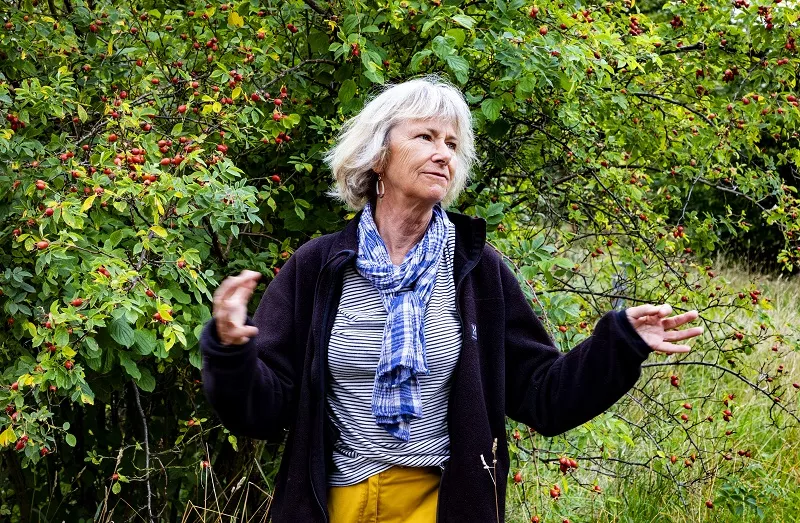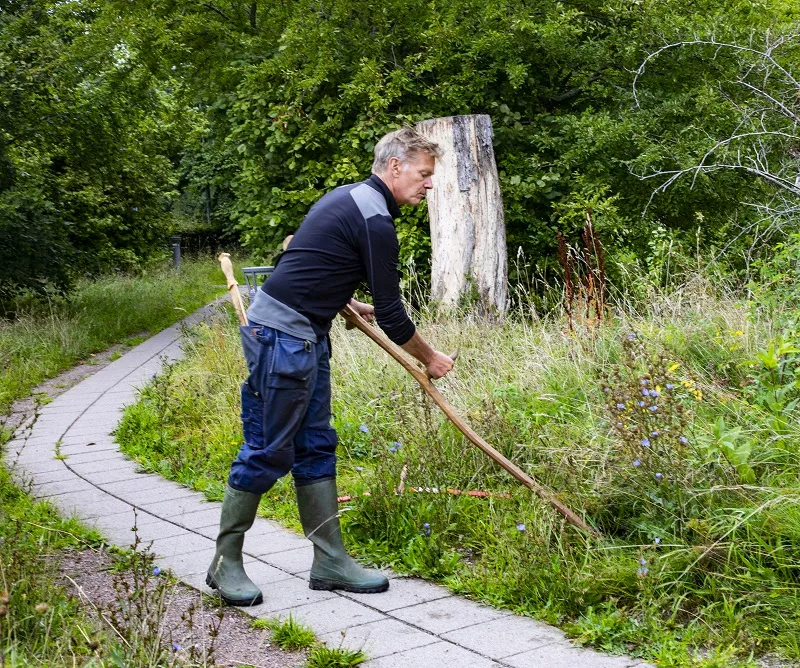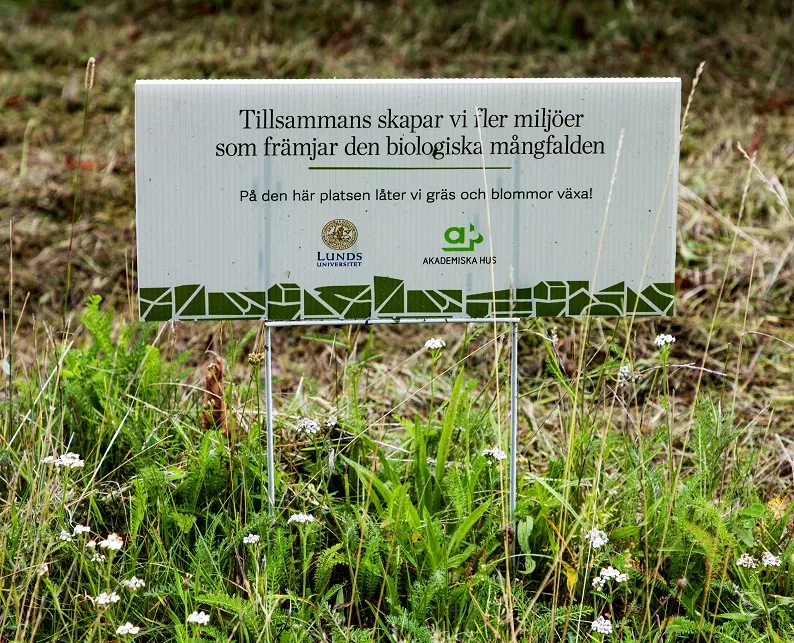Biodiversity on campus
On an August day, a few researchers are out scything grass as if on an ancient farm. Why? To create a living campus area with a rich flora and plenty of insects.
Honor Prentice, professor emerita of biology, was one of the initiators of the project to establish meadows around the Ecology building in the northern part of the campus. Together with Akademiska Hus and PEAB, which are responsible for the maintenance of the campus’s green areas, the Department of Biology is taking a long-term and more sustainable approach to the area. This means not mowing some of the lawns during the summer, but scything the high grass in August. Classic meadow plants need nutrient-poor soil; gathering and removing the grass gradually reduces the nutrient levels in the soil. Over time, this creates an environment in which plants, insects and other animals can thrive. They have not planted any flowers or other new plants, but instead allowed those that thrive to take over as the nutrient levels in the soil decrease. It is popular to sow flower meadows with short-lived colourful plant species, but that is not necessarily a good thing, according to Honor.
‟Flower meadows may be appreciated by people and certain insects, but they are not sustainable long-term as you have to prepare the soil and re-sow them at regular intervals. Don’t forget that the core of a meadow is grass!”
Some of the new meadows in the north campus are mown mechanically or using a horse-drawn mower. And enthusiasts from the Department of Biology are usually spotted at the end of August cutting the meadow around the Ecology building with scythes. They have already seen that species such as cowslips have started responding positively to the new maintenance method.
Increased biodiversity is one of the benefits of the project. Improved collaboration and knowledge transfer are others. Ulf Luvö, technical administrator at Akademiska Hus, explains that he looks forward to the meetings about the land around the Ecology Building.
‟It is informative and interesting to test methods other than those we usually use. We have learnt a lot along the way. For example, we usually mow a border around the unkempt patches, so people in the area understand that leaving some grass uncut is not neglect but a deliberate choice. We have also put up signs explaining the approach.”
In traditional agriculture, the cut meadow hay was used as winter fodder for the farm animals. What happens to the grass that is gathered around the University? Unfortunately, it cannot be sold as animal fodder, as the risk of glass shards or other rubbish in the feed is too high. Instead, it will be used to heat homes through the district heating network.




